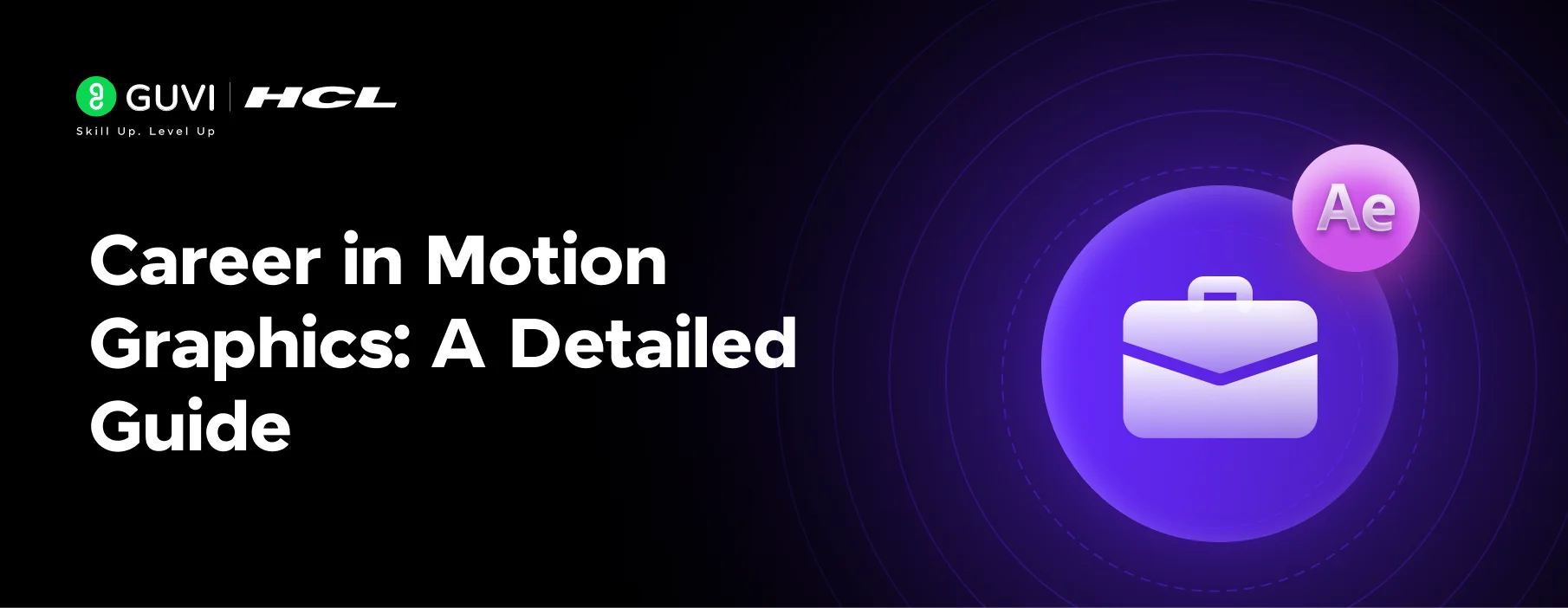
Career in Motion Graphics: A Detailed Guide
Mar 24, 2025 7 Min Read 3462 Views
(Last Updated)
Jumping into a career in motion graphics can be a thrilling ride. This dynamic field blends creativity with technology, offering endless opportunities to bring stories to life through visual effects and animations. If you’re just starting out or even looking to sharpen your skills, understanding the educational requirements and mastering the right tools, along with networking, is key to making a mark in this industry.
Like most fields, motion graphics as a career demands a mix of formal education, hands-on experience, and continuous learning. From earning a degree in a related field to building a standout portfolio and staying updated with the latest software, there’s a lot to cover. In this guide, we’ll break down everything you need to get started and succeed in the exciting world of motion graphics.
Table of contents
- Educational Requirements for a Career in Motion Graphics
- Software Proficiency To Master for a Career in Motion Graphics
- Motion Graphics Job Market in India
- Salary Insights
- Job Growth Projections
- Working as a Motion Graphics Designer
- Where Can You Work?
- Going Solo: Freelancing
- Industries for a Career in Motion Graphics Designers
- Must-Have Skills for a Career in Motion Graphics
- Animation Skills
- Software Skills
- Motion Graphics as a Career- Key Areas to Focus On
- Portfolio Development
- Networking and Continuous Learning
- Conclusion
- Frequently Asked Questions
- How important is coding knowledge for a motion graphics designer?
- What role does client feedback play in the motion graphics design process?
- How can one transition from a graphic design background to a career in motion graphics?
- What are the best resources for learning and staying updated in a career in motion graphics?
Educational Requirements for a Career in Motion Graphics
To kick off a career in motion graphics, a bachelor’s degree is usually your ticket. You’ll need a degree in computer graphics, art, or something similar. But don’t think a diploma alone will cut it – you need to have a strong portfolio to show off your skills and creativity.
While school gives you the basics, the learning never stops. This field changes fast, so keep up with online tutorials, webinars, and workshops for some inspiration to stay ahead sharp, and creative.
Before we proceed further, it’s essential to have a solid foundation in graphic design principles and animation basics. If you’re eager to dive deep into creating captivating motion visuals, consider joining GUVI’s Adobe Certified VFX Career Program with AI Integration.
In this program, you’ll learn the fundamentals of animation, visual effects, and storytelling techniques. Gain hands-on experience with industry-standard tools and techniques, and unlock your creativity to craft stunning motion graphics for videos, presentations, and more.
Software Proficiency To Master for a Career in Motion Graphics
Knowing your way around key software is a must. Most motion graphic designers swear by Adobe tools like Photoshop, Illustrator, and Cinema4D. Getting good at these will help you create eye-catching designs and animations.
You’ll also need to be good at animation, both 2D and 3D, to turn static images into moving masterpieces based on what the project or client needs. Remember, software keeps changing. Staying up-to-date with the latest motion graphics software is key to staying ahead in the game.
Starting motion graphics as a career means mixing formal education, hands-on experience with some top-notch projects to showcase, and non-stop learning. Nail these, and you’ll find plenty of doors opening in this exciting field.
Motion Graphics Job Market in India
So, you’re thinking about diving into the world of motion graphics? Smart move! Let’s break down what you can expect in terms of pay and job opportunities in India.
Salary Insights
How much can you make in motion graphics as a career in India? Well, it depends on where you are, how much experience you’ve got, and the industry you’re in. According to Glassdoor, the average salary for a Motion Graphics Designer in India is around ₹545,000 per year. Entry-level designers can expect to start at around ₹200,000 annually, while those with extensive experience and advanced skills can earn upwards of ₹1,000,000 per year.
Location matters too. In major cities like Mumbai, Bengaluru, and Delhi, motion designers often earn higher salaries due to the concentration of media, entertainment, and tech companies.
Job Growth Projections
Good news: the future looks bright for motion graphics jobs in India. The demand for animation and visual effects is growing rapidly, driven by the booming media and entertainment industry, the rise of digital marketing, and the increasing popularity of online education.
According to FICCI-EY’s Media & Entertainment Industry Report, India’s animation, visual effects, and post-production industry is expected to grow at a compound annual growth rate (CAGR) of 17.5% to reach INR185 billion by 2026.
Why the growth? More demand for animation and visual effects in video games, movies, and TV shows. Plus, businesses need motion graphics designers for promotional materials, explainer videos, and other digital content.
But, heads up—competition is fierce. To stand out, keep sharpening your skills, build a strong portfolio, and never stop learning!
Also Read About Motion Graphics Designer Salary in 2024: Trending Now
Working as a Motion Graphics Designer
Getting into the world of motion graphics can open a wide range of options for you. Whether you’re eyeing a gig at a big agency or dreaming of being your own boss, there’s a spot for you.
Where Can You Work?
Motion graphics designers can find themselves in all sorts of places. Think advertising agencies, movie studios, tech firms, and even software companies. Basically, anywhere that needs eye-catching visuals
Advertising is a big one. Ever seen a TV commercial or a flashy video ad? You got it right- that’s motion graphics magic right there! The gaming world is another playground for motion designers. From character animations to special effects, there’s a lot to create.
Startups are also hungry for motion designers, especially for those snazzy explainer videos. It’s a great way to get your foot in the door and build your portfolio.
Choosing where to work really boils down to what you want out of your career. Do some homework on different industries, see what they need, and figure out where your skills can shine the brightest.
Also Explore About Career in Animation: Jobs, Salary, Future Scope in India (2024)
Going Solo: Freelancing
More than half of motion graphics designers are their own bosses. Freelancing means you’re running your own show, from finding clients to managing projects.
The freedom is awesome—you pick your projects and set your rates. But it also means you’ve got to be on top of your game. Self-discipline and business smarts are a must. You’ll need to hustle for clients, juggle deadlines, and handle all the nitty-gritty of running a business.
Freelancing can be pretty lucrative, too. Many designers make a good chunk of their income this way. Plus, you get to work on a variety of projects, which keeps things interesting.
Of course, freelancing isn’t all sunshine and rainbows. You’ve got to keep your skills sharp, stay updated with the latest motion graphics software, and have a phenomenal motion graphics portfolio to attract clients. Networking and continuous learning are key to staying competitive.
No matter what you’re aiming for—a steady job or a freelance life; the secret to success in motion graphics is staying flexible and creative and always improving your skills.
Also Read: Best Practices in Motion Graphics for Brand Identity To Follow in 2024
Industries for a Career in Motion Graphics Designers
As a motion graphics designer, you can find your groove in a bunch of different fields. Here are some places where your skills can really shine.
Advertising Industry Opportunities
The ad world is a playground for motion graphics. Think about all those flashy TV commercials and online video ads—they often need a motion designer’s touch. But it’s not just TV; the internet is a goldmine, too. You might end up crafting animations for banner ads, social media campaigns, and even those giant digital billboards you see in Times Square.
Startups and Explainer Videos
Startups are always on the lookout for cool explainer videos. These videos help them pitch their products or services to clients and investors. Your animations can make or break their first impression. So, if you’re looking to grow your portfolio and make a real impact, startups are a great place to start.
Cinema and TV Industry Roles
Lights, camera, action! The cinema and TV industries are another hotspot for motion graphics designers. You could be designing movie titles, TV show intros, or even those snazzy channel logos and bumpers. Your work sets the tone and style for the entire production.
Web and Mobile App Design Collaboration
Websites and mobile apps need to look good and feel smooth. That’s where you come in. By adding animations, you can make user experiences more interactive and enjoyable. You’ll be working closely with web, UI, and UX designers to bring these digital spaces to life.
Game Industry Demand
Gamers, rejoice! The game industry is a treasure trove of opportunities for motion graphics designers. From character animations to special effects and promotional videos, there’s always something exciting to work on. And with mobile gaming on the rise, the demand for your skills is only going up.
Each industry offers its own set of challenges and rewards. Choose the one that excites you the most, and let your creativity run wild.
Find Out Best Product-based Companies for Motion Graphic Designing in 2024
Must-Have Skills for a Career in Motion Graphics
If you’re aiming to rock those motion graphics jobs, you should focus on sharpening a few key skills. The biggies? Animation chops and software know-how.
Animation Skills
Being a motion graphics designer means you need to be a whiz at animation. We’re talking about turning flat images into lively 2D and 3D animations that pop. Your designs should hit the mark for the project or make the client happy. You need to think outside the box and see the final product in your head before it even exists.
You also need to know how to use animation to communicate your ideas. This means creating characters, building environments, and nailing the basics of movement and timing. You can also follow some motion graphics artists to gain some deep insights!
Software Skills
Knowing your way around the right software is a game-changer. According to the US Bureau of Labor Statistics (BLS), motion graphic designers often use Adobe tools like Photoshop, Illustrator, and Cinema4D. For more on the tools of the trade, see our guide on motion graphics software.
Being good with these tools lets you create and tweak visuals, add effects, and put together the final piece. Keeping up with the latest software updates and industry trends is also a must.
Plus, working in motion graphics means teaming up with creative folks and clients from start to finish. This includes brainstorming, storyboarding, and editing. You need to be good at meeting deadlines and rolling with the punches when a project needs change.
On top of the tech stuff, you need a sharp eye for detail, solid problem-solving skills, and great communication. And don’t forget to have a robust portfolio to show off your work.
By nailing these skills, you’ll be ready to crush it in motion graphics jobs and build a career you love.
Motion Graphics as a Career- Key Areas to Focus On
Making it big in motion graphics isn’t just about knowing the software. You need a game plan, a thirst for learning, and a knack for making connections. Let’s break it down into two main steps: creating an eye-catching portfolio and networking like a pro while keeping your skills sharp.
Portfolio Development
Your portfolio is your golden ticket. It’s the first thing employers or clients check out when they’re thinking about hiring you. According to Glassdoor, companies shell out more for designers who are wizards with tools like Adobe Creative Suite and have a portfolio that screams “professional.”
To make your portfolio stand out:
- Show a Variety of Work: Prove you’re not a one-trick pony. Include different styles and types of projects to showcase your versatility.
- Highlight Your Best Work: Put your top projects front and center to make a strong first impression.
- Include Behind-the-Scenes Content: Don’t just show the final product—give a peek behind the curtain to illustrate your process and creativity.
- Keep It Updated: Regularly refresh your portfolio with your latest and greatest projects to show that you’re active and evolving.
Your portfolio should be a reflection of you—your style, your skills, your flair. It’s your chance to wow potential employers and snag those top-tier motion graphics gigs.
Also Explore: Motion Graphics Designer Resume: 13 Important Tips to Make it Outstanding
Networking and Continuous Learning
Networking isn’t just for schmoozers. For a successful career in motion graphics, knowing the right people can open doors and give you insider tips. Plus, you need to stay on top of the latest tech and trends in this fast-moving field.
Being a great designer is half the battle; you also need to sell your skills. Knowing how to pitch yourself can make all the difference.
Here’s how to network and keep learning:
- Attend Industry Events and Workshops: These are great places to meet peers and potential clients.
- Join Online Communities and Forums: Engage with other motion graphics professionals to share knowledge and get feedback.
- Follow Industry Pros on Social Media: Stay updated on trends and tips by connecting with leading designers.
- Take Online Courses and Tutorials: Continuous education keeps your skills sharp. Platforms like GUVI, Coursera, and LinkedIn offer courses in motion graphics software to help you stay current.
- Seek Inspiration: Regularly check out works of motion graphics artists for inspiration to spark new ideas and keep your creativity flowing.
Building a successful career in motion graphics is a marathon, not a sprint. Keep learning, stay adaptable, and make those connections. With a solid portfolio and a strong network, you’ll be on your way to making waves in the motion graphics scene.
Enroll in GUVI’s Adobe Certified VFX Career Program with AI Integration to get your career off to a great start. Here, you will work on amazing real-world projects while learning how to use Adobe Illustrator, Photoshop, After Effects, and Premiere Pro.
Conclusion
A career in motion graphics is an exciting journey filled with creativity and endless opportunities. From mastering key software and animation skills to building a standout portfolio and networking with industry professionals, you’ll find plenty of ways to make your mark. Whether you aim to work in advertising, cinema, gaming, or as a freelancer, staying adaptable and continually improving your skills will pave the way for success.
Remember, the key to thriving in motion graphics is a blend of technical know-how, creativity, and strategic networking. Find the industry that excites you the most and let your passion drive your success. We’d love to hear about your experiences and ideas—share your thoughts in the comments below. Your journey and insights can inspire others to explore the fascinating world of motion graphics as a career.
Must Explore Top 50 Motion Graphics Interview Questions and Answers
Frequently Asked Questions
While only sometimes mandatory, having a basic understanding of coding can be beneficial. Knowledge of languages like JavaScript or Python can help create more complex animations and integrate motion graphics with interactive web elements.
Client feedback is essential for refining and perfecting animations. Designers need to be open to constructive criticism and willing to make adjustments to meet the client’s vision and expectations.
Transitioning from graphic design to a career in motion graphics involves learning key animation software, such as Adobe After Effects and Cinema4D, and developing skills in 2D and 3D animation. Building a portfolio that showcases motion graphics projects and taking specialized courses can also facilitate this transition.
To excel in a career in motion graphics, staying updated with the latest trends and tools is crucial. Online platforms like GUVI, Coursera, Udemy, and LinkedIn Learning offer courses on motion graphics and related software. Additionally, following industry blogs, attending webinars, and joining professional communities can provide valuable insights and inspiration.









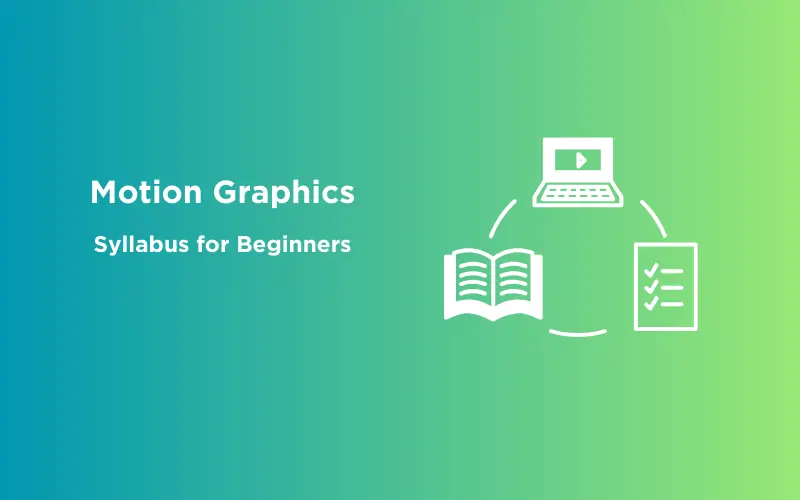
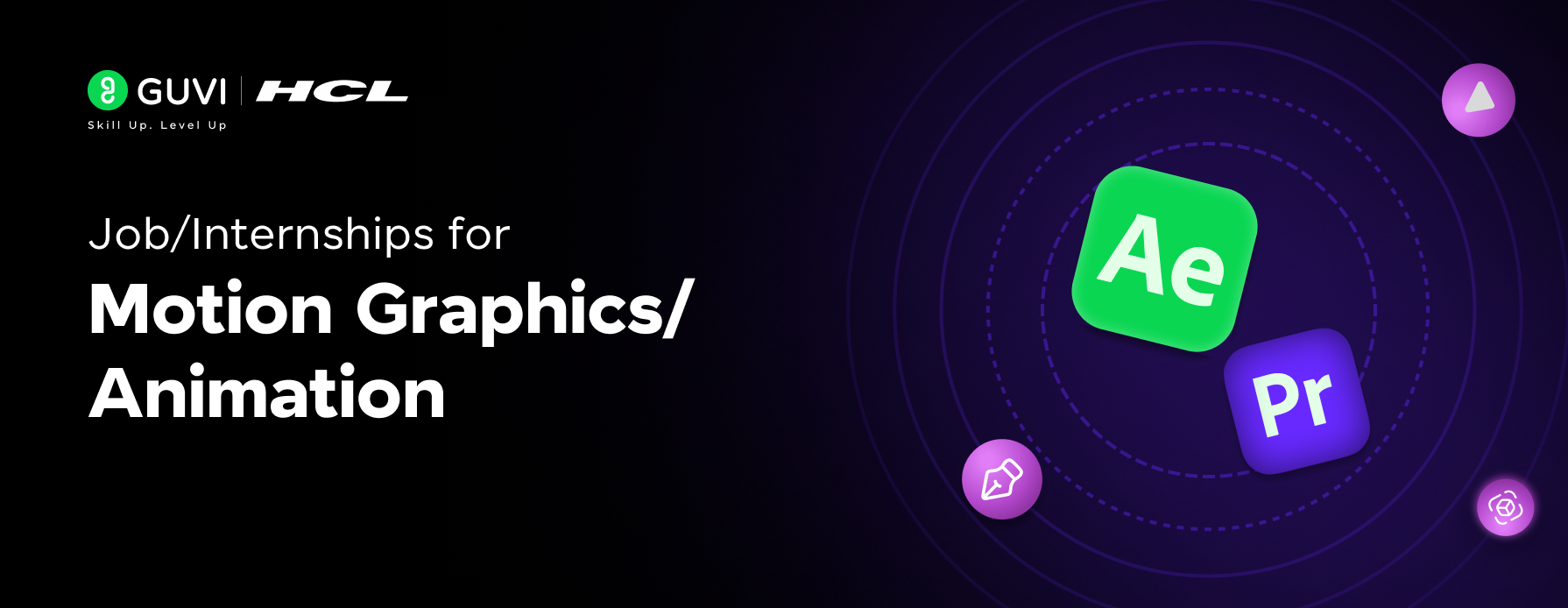

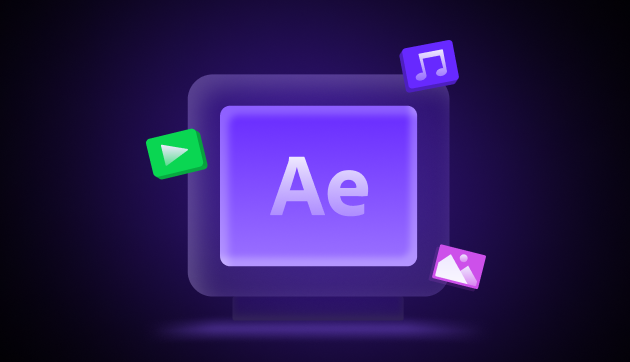
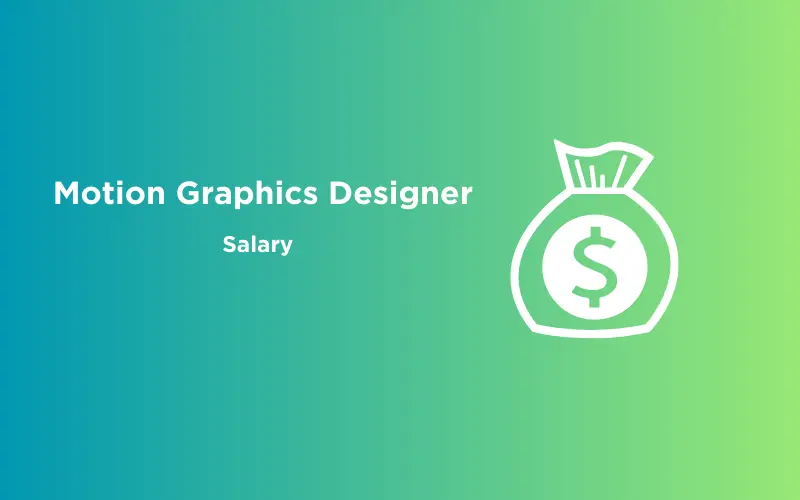


![8 Best Books to Learn Motion Graphics Design [Must-Reads] 7 Feature image - Best Books to Learn Motion Graphics Design](https://www.guvi.in/blog/wp-content/uploads/2023/10/Feature-image-Best-Books-to-Learn-Motion-Graphics-Design.webp)


Did you enjoy this article?